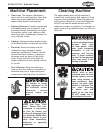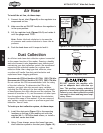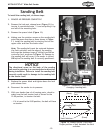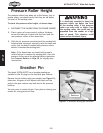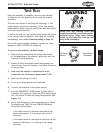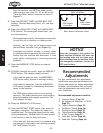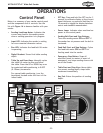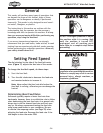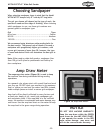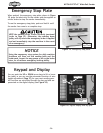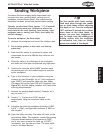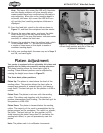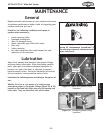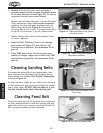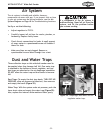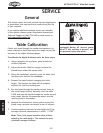
-25-
W1756/W1757 43" Wide-Belt Sander
OPERATIONS
Choosing Sandpaper
When selecting sandpaper, keep in mind that the Model
W1756/W1757 accepts only 43" wide by 60" long belts.
The grit you choose will depend on the type of work, the
species of wood and the stage of finishing.
When choosing
which sandpaper to use, use these grit numbers as a
general guide to sandpaper type:
Grit Type
60 or less ..................................................
Coarse
80-100 .................................................. Medium
120-150 .......................................................Fine
We recommend using aluminum oxide sanding belts for
the best results. The general rule of thumb is to sand a
workpiece with progressively higher grit numbers, with
no one grit increase of more than 50; however, the type
of wood and desired finish will determine the best grit to
use.
Note: When used on wide-belt sanders, sandpaper finer
than 150 grit will often be problematic and load up or
burn workpieces.
NOTICE
DO NOT VOID MACHINE WARRANTY!
Keep the amp draw within the GREEN
zone shown on the AMP LOAD CHART.
If you operate the sander in the RED
zone, motor damage may occur and
will not be covered under warranty.
Figure 18. Amp draw meter.
Amp Draw Meter
The amperage draw meter (Figure 18) is used to keep
the
machine from being overloaded during sanding
operati
ons.
As a general rule, always start with a small load and work
your way up. DO NOT work your machine to its maximum
load, or where you can hear the motor lose RPM; instead,
make multiple passes or install a coarser grit sandpaper.
Amp load will be directly affected by many factors such
as feed rate, depth of cut, wood type, sandpaper grit,
and workpiece width. If the amp load is in the red load
range, the machine is overloaded and motor damage may
soon occur. Use the amp load chart on the meter to keep
the amp load in the green range during operation.



